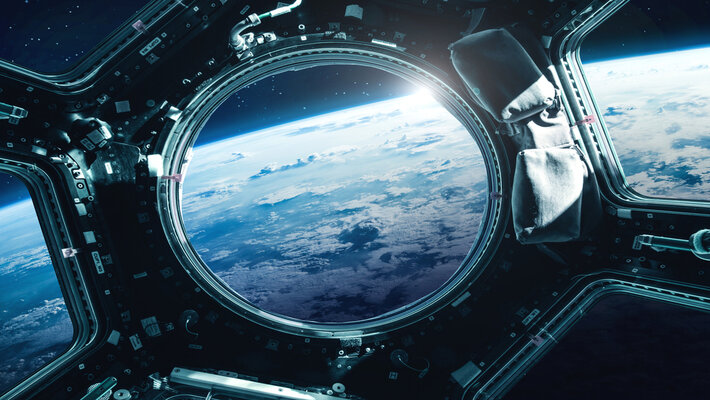
Not so long before, space travel and colonization still remained fantasies of writers and film makers but now, with the advancements made in astronautics, robotics, and astrophysics, dreams about seamless space travel is taking shape in real life. For some people, the recent pandemic revitalized their aspirations to establish humanity as a multi-planet species. Many experts also believe that going forward, both natural and man-made catastrophes will become more devastating making space colonization a necessity. Before fantasizing too much about space travel and colonization, let’s look at it from a more pragmatic point of view.
Using the vast amounts of data collected from the teams of astronauts, medical professionals and scientists who inhabited the International Space Station, experts have been able to learn more about space travel and its potential impact on human bodies. Many have even come up with projects to mimic zero gravity in earth itself to further understand the limits of human endurance. While these initiatives help in accelerating the development of space travel, there are some critical challenges humanity will face in its quest for space colonization. Let’s analyze some of the most important ones.
Cost
SpaceX CEO and billionaire Elon Musk is one of the pioneers of space travel. He not only aspires to send the first humans to Mars but also aims to use it as a stepping stone to build a self-sustaining settlement on the red planet. Let’s look at this from a financial point of view. Musk himself has said that the SpaceX Mars colonization project will need one million people to pay USD 200,000 each to work. What would be the cost for the company to build a new city in three decades? Musk on twitter stated that it will be ‘between USD 100B and USD 10T’. Spending this kind of money in any project will have massive impact on the global economy. Now, let’s look at one of the missions undertaken by NASA, a leading name in international space travel and exploration. Last year, NASA’s Perseverance rover touched down on the red planet and factoring inflation, the mission is expected to cost USD 2.9 billion. For seamless space travel and exploration to happen, the cost incurred for it should come down significantly. For that to happen, more innovative techniques and technologies should be developed such as SpaceX’s Falcon 9 which is a launch vehicle that can be relaunched multiple times. This makes future space missions more cost-effective.
Propulsion and Navigation
From a technical point of view, propulsion and navigation will pose great threats for space travel. Let’s start by looking at propulsion. For a rocket to launch from Earth’s surface it should reach a speed of 7.9 km per second and achieving this is expensive. For NASA’s Mars Curiosity rover, it took nearly a tenth of the actual mission budget to launch it. Now, if we are looking at a manned mission where supplies to sustain their lives are also added to the load, the cost would go even higher. That said, with the development of composite materials of exotic metal alloys as well as fibered sheets can help to decrease the weight. This coupled with more powerful and efficient fuel mixtures can make the launching of rockets easier.
From a navigation point of view, after getting into earth’s orbit, one will encounter 3000 dead satellites and the total number of space debris is closer to 500,000 all of which can make navigation that much harder. While pulling the satellites from the orbit will require a lot of effort and valuable resources, new satellites can be designed in a way that enables them to fall out of orbit on their own. Also, the Deep Space Network which is a collection of antenna arrays in different locations in the world is the only navigation tool for space. But as the number space missions increase, it is making the network more congested. Even though, NASA aims to tackle this issue by making changes in spacecrafts, the farther they go from Earth, the less reliable this new method will become. Going forward, developing an autonomous system which doesn’t require ground control should be top priority in order to offer better navigation for spacecrafts.
Protection of Humans
Humans have evolved to survive the conditions on Earth and because of this, there are myriad of challenges and health concerns which space travel can bring with it. Bioethicist George Dvorsky when talking about Mars and its harsh conditions stated that ‘the red planet is cold with an atmosphere which is 100 times thinner than our planet’. Even the air on Mars has noxious carbon dioxide which doesn’t protect the planet’s surface from Sun’s rays. Moving from Mars to the Moon, things are still complicated with lunar dust made of shards of silica which can cut like glass posing plethora of issues. The dust even got into the eyes and throats of Apollo astronauts. The radiation on the Moon is also 200 times higher than on our planet which can cause myriad of health concerns for humans. There have even been cases where astronauts who spend just a year in space having shown irreversible medical issues. For long space travels and space colonization to become a reality, development of healthcare and medicine is imperative which will allow humans to cope-up with the harsh environments of space. Another way of overcoming this challenge is by creating habitats in space as well as on planets that can support life. But going this route poses the challenge of creating structures and artificial environments which can support a sufficient amount of human lives over long periods of time.
Apart from the aforementioned challenges, another issue that space travelers will face is in terms of communication and the farther they travel, the possibility of having an instant communication with Earth starts to diminish. For example, when Earth and Mars are at their greatest distance which is nearly 250 million miles, the communication delay is more than 20 minutes. This can lead to communication in an emergency situation impossible and even if humanity overcomes these challenges and start colonizing different planets, the next big question to answer is regarding governance. This can be divided into three sub questions: 1) Who can be allowed to colonize space, 2) What are the basic governance principles, and 3) How to deal with colonies who wish to become independent.







